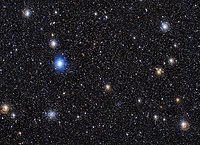Gravitational binding energy

Gravitational binding energy is kind of like a game of tug-of-war between objects in space. Imagine you and your friend are holding onto opposite ends of a rope and pulling as hard as you can. The harder you pull, the more energy you use. In space, gravity is the "rope" that's pulling objects together.
When two or more objects in space are attracted to each other by gravity, they can form a system, like how the Earth and the moon are a system. The harder the gravity pulls them together, the more energy is needed to break them apart. This energy is called gravitational binding energy.
Think of it like a puzzle. When you put the pieces of a puzzle together, they fit so well that it's hard to pull them apart. The harder it is to pull them apart, the more energy you need. The same is true for objects in space that are held together by gravity.
So, the bigger and heavier the objects are, and the closer they are to each other, the more gravitational binding energy they have. That's why planets and stars have a lot of gravitational binding energy – the pull of gravity is really strong between them. But smaller things, like asteroids, have much less gravitational binding energy, because they're not as heavy or close together.
If something happens to change the amount of gravitational force between objects in space – like a planet getting hit by a big asteroid – it can cause the gravitational binding energy to change. Sometimes this can break apart a system, like a star exploding or a moon breaking away from a planet. Other times, it can just cause the objects to move closer or farther apart from each other.
When two or more objects in space are attracted to each other by gravity, they can form a system, like how the Earth and the moon are a system. The harder the gravity pulls them together, the more energy is needed to break them apart. This energy is called gravitational binding energy.
Think of it like a puzzle. When you put the pieces of a puzzle together, they fit so well that it's hard to pull them apart. The harder it is to pull them apart, the more energy you need. The same is true for objects in space that are held together by gravity.
So, the bigger and heavier the objects are, and the closer they are to each other, the more gravitational binding energy they have. That's why planets and stars have a lot of gravitational binding energy – the pull of gravity is really strong between them. But smaller things, like asteroids, have much less gravitational binding energy, because they're not as heavy or close together.
If something happens to change the amount of gravitational force between objects in space – like a planet getting hit by a big asteroid – it can cause the gravitational binding energy to change. Sometimes this can break apart a system, like a star exploding or a moon breaking away from a planet. Other times, it can just cause the objects to move closer or farther apart from each other.
Related topics others have asked about:
